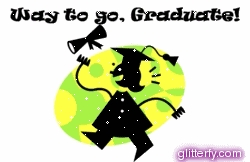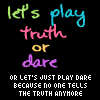Mastery learning is an instructional philosophy based on the belief that all students can learn if given the appropriate amount of time and the appropriate instructional opportunities. We believe that students can achieve mastery when the curricular standards are clearly articulated and defined, when assessments accurately measure the students’ progress toward performance of the objective(s), and when instructional lessons are tightly aligned to the curriculum.
Mastery Learning is based on several premises that include:
· All individuals can learn
· People learn in different ways and at different rates.
· Under favorable learning conditions, the effects of individual differences
approach a vanishing point.
· Uncorrected learning errors are responsible for most learning difficulties.
What defines mastery learning approaches is the organization of time and resources to ensure that students are able to master instructional objectives. There are many different instructional strategies (small group instruction, cooperative learning, use of differentiation activities, discovery learning, discussion groups, etc.) that teachers use in the classroom that support mastery learning. Regardless of the instructional strategy used, Bloom, Guskey and others have outlined what teachers do in Mastery Learning classrooms:
Teachers determine what the students will know and what they will be able to do after the lesson.
Content is divided into small learning units and tools or processes are developed to check students’ progress and learning.
After the material from the unit is presented, an assessment is administered to determine each student’s progress and to identify areas in which more instruction may be needed (FORMATIVE ASSESSMENT).
Information is given to the student about their learning process (FEEDBACK). This “feedback” reinforces precisely what was most important for the students to learn in each unit of instruction, recognizes what students learned well, identifies the specific concepts on which students need to spend more time and is appropriate for students’ levels of learning.
A student scoring at a high level of performance based on specific criteria on an assessment will move directly into activities that provide opportunities for them to broaden, expand or deepen their learning (ENRICHMENT) or may be moved on to the next unit of study or group of objectives to be mastered (ACCELERATION).
Students who have not mastered the material are engaged in activities that offer guidance and direction on how they can correct their learning errors and remedy their learning problems (CORRECTIVES). Students are provided with alternative learning methods and then given another formative assessment to check for mastery.
At the end of the unit(s), the teacher evaluates the final competence of students by giving a SUMMATIVE ASSESSMENT covering the objectives of the unit. After the assessment is given, teachers evaluate the results and plan next steps.
“Mastery learning is usually implemented through a careful process of organization and planning, followed by specific procedures for classroom application and student assessment and evaluation. Mastery learning does not challenge teachers’ professionalism or academic freedom, but instead offers a useful instructional tool that can be flexibly applied in a variety of teaching situations. Although it is not an educational cure-all, mastery learning significantly increases the positive influence teachers can have on student learning” (Guskey, 1997).
Friday, June 15, 2007
What is Mastery Learning?
Subscribe to:
Post Comments (Atom)






0 comments:
Post a Comment